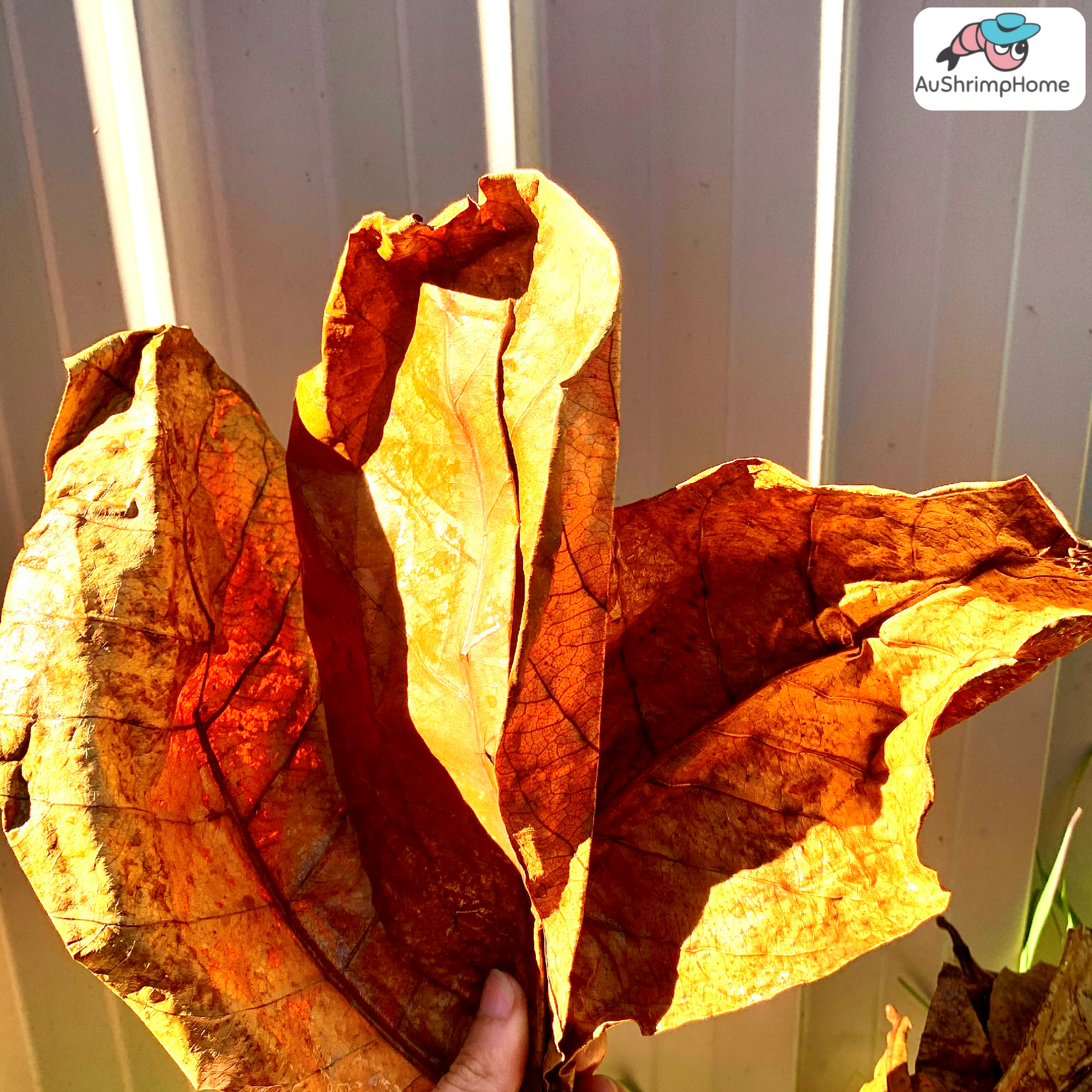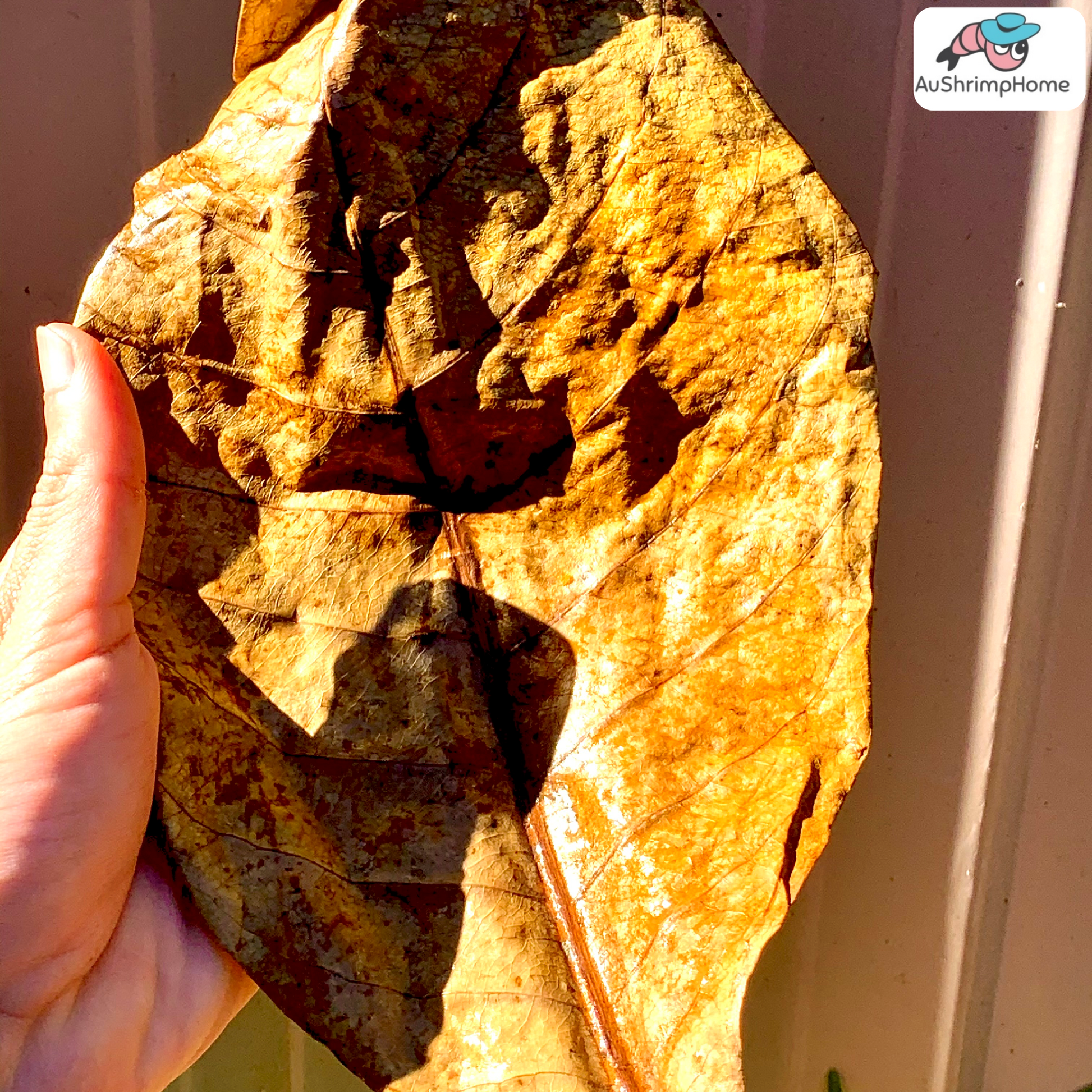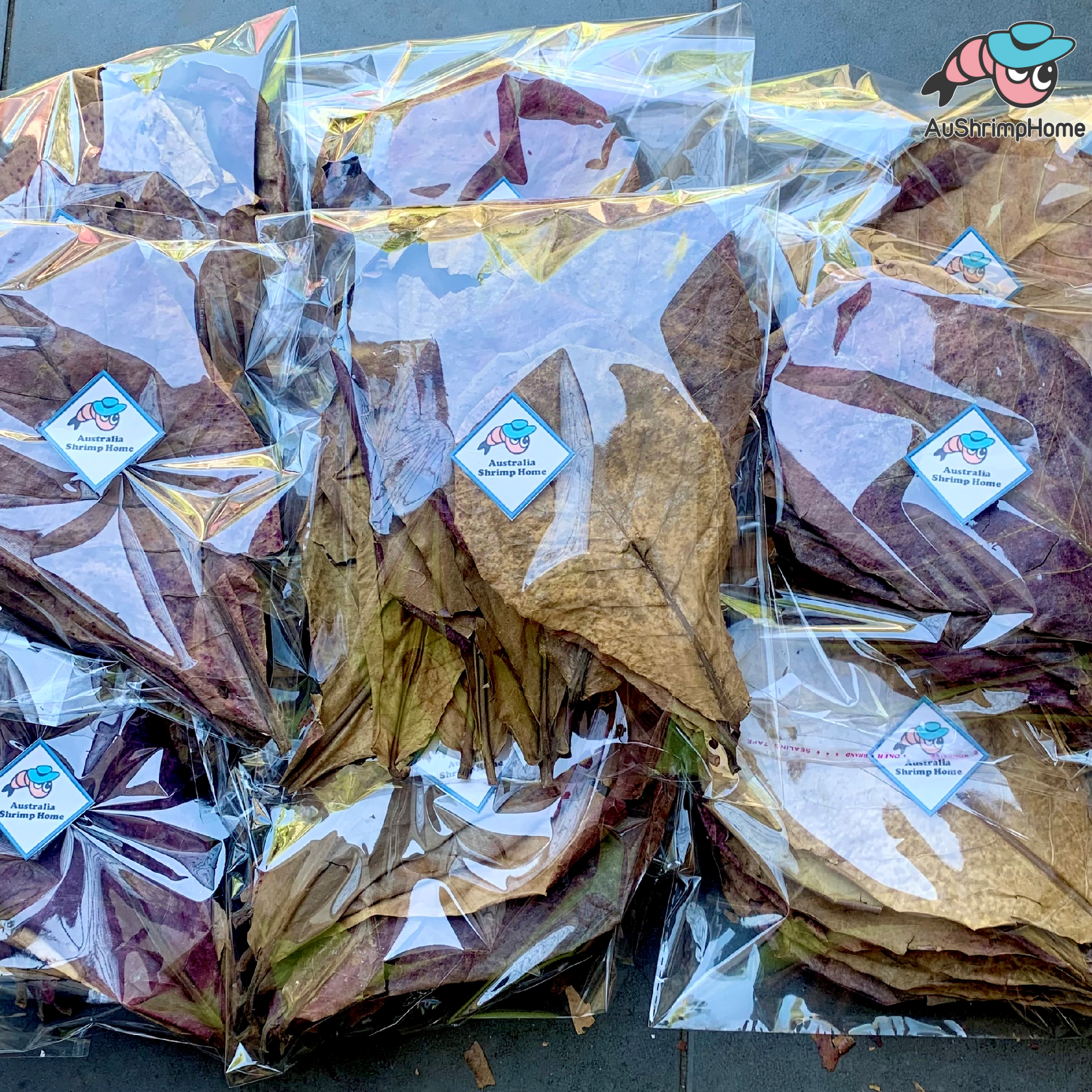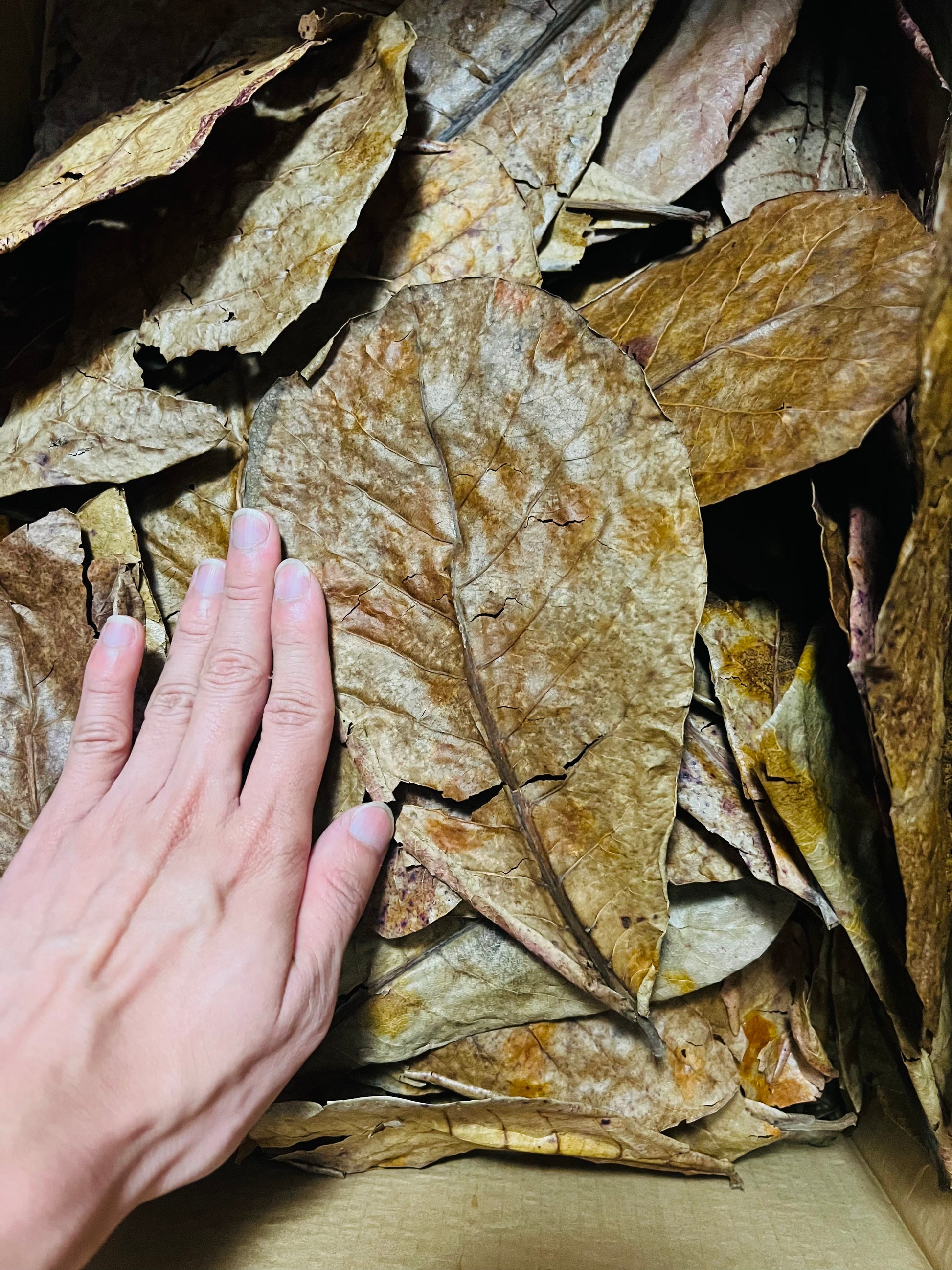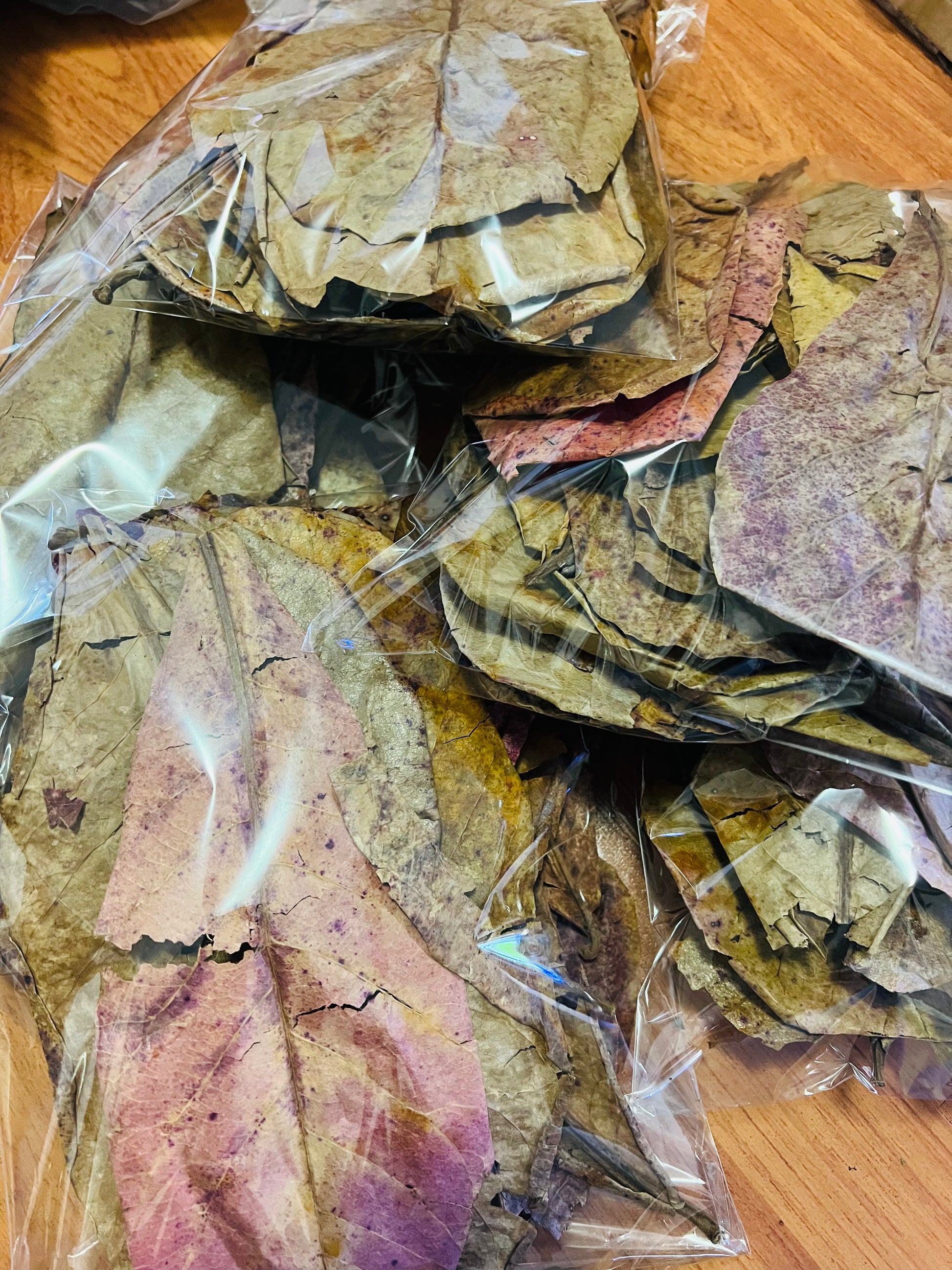Indian Almond Leaves | Pack of 20+ Mix size Leaves
Indian Almond Leaves | Pack of 20+ Mix size Leaves
In stock
Couldn't load pickup availability
Indian Almond leaves
The Indian Almond leaves have the effect of reducing the pH of the water but not significantly. The leaves contain violaxanthin, violaxanthin, lutheinepoxid, humic acid, and tannic acid and add two lutein-isomers which help to create a natural environment for most tropical shrimp. The leaves will release a few Ammonia (NH3) in water to reduce and absorb harmful chemicals such as NH3, H2S. Eliminating the disease too high Ammonia in water. Indian Almond leaf extract also contains a very high amount of Calcium for fish, shrimps. In addition, the leaves can also handle heavy metals in the water (very harmful to fish and shrimp), this is something that few people know.
How to use dried leaves in aquariums, shrimp tanks:
Our IALs have been washed and dried, but you should wash them again before using them for best results. About the dosage, 1 leaf >= 15cm for 20 liters of water is optimal.
Package includes 12-15 mixed size Leaves [Almost jumbo size]
Note:
- Please do not put too many in a tank, Ph will reduce quickly and it will release tons of ammonia!
- Use green or dried leaves? You should use dried leaves with a dark brown color. The leaves also have nutrients for fish, but the leaves have a lot of live sap, chlorophyll, ... and because the leaves are still fresh, when soaked in water, it will be more difficult to release nutrients, even water damage. Dried leaves only have fiber, and nutrients, so soaking dried leaves will be safer and more effective than soaking fresh leaves.
- How long can the leaves stay in the tank? Dried eagle leaves when soaked in an aquarium can begin to release nutrients and antiseptic within 8-10 hours. You can see that after just a few hours the water starts to turn yellow. The longer or more water leaves, the darker the color will become. Since the water is light yellow or light brown, it may not be pleasing to the eye, especially if you keep your fish in a glass tank. Soaked leaves can be left in the tank and do not need to be removed, which does not affect the quality of the water at all. After rotted, the leaves can be destroyed by snails or water micro-organisms, making food for microorganisms. If the leaves are soaked but not completely dry, there may be a little bit of viscous on the surface, you should replace them soon.
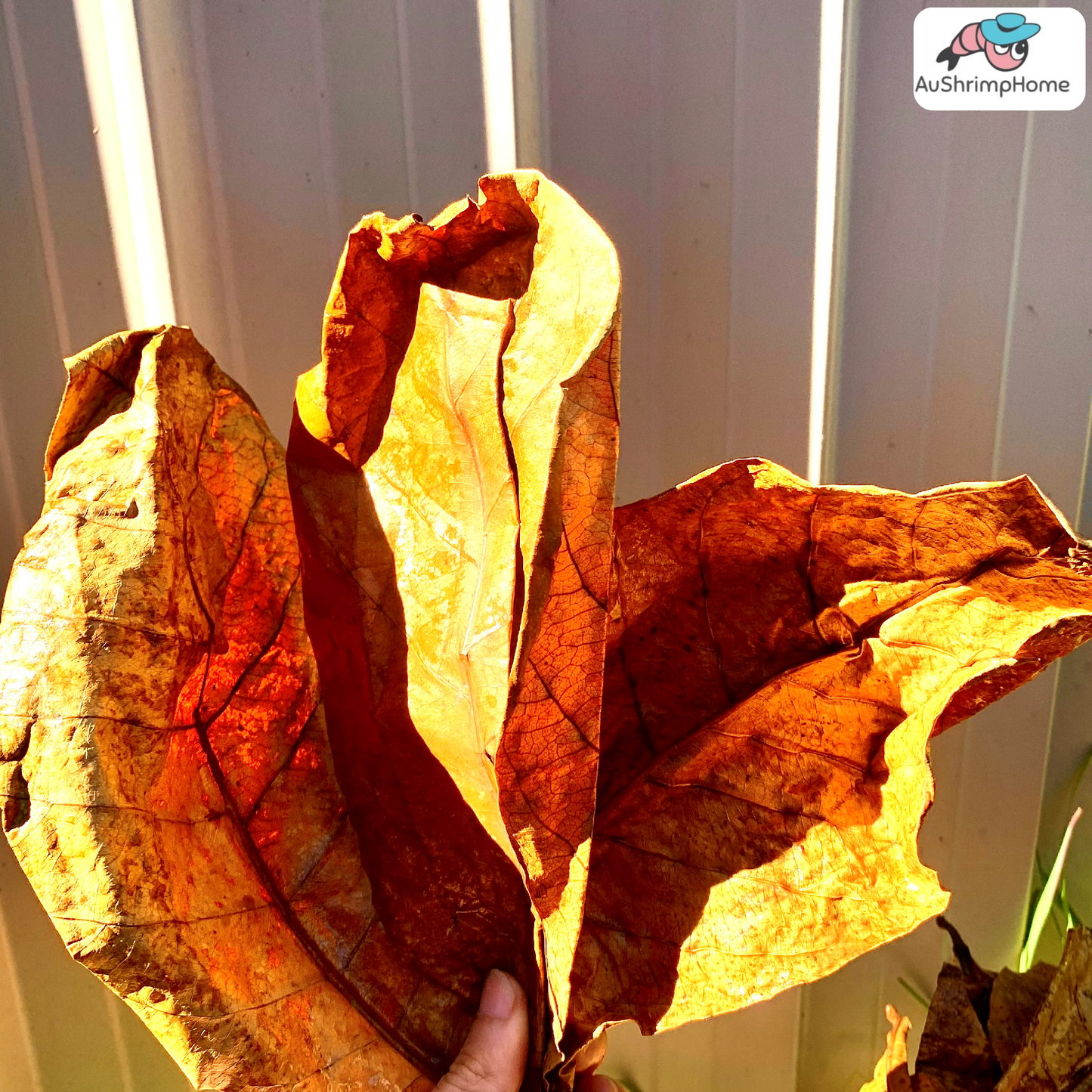

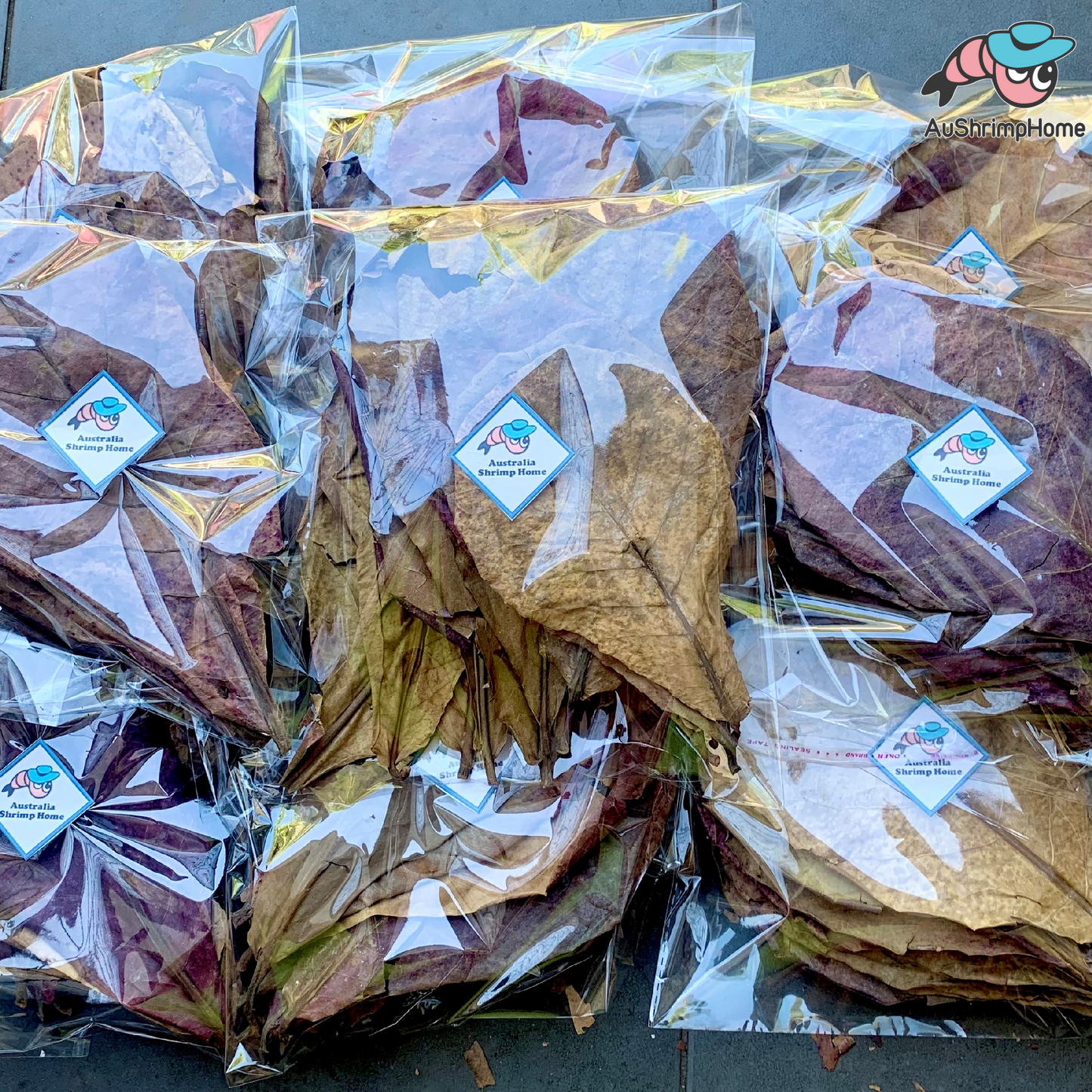

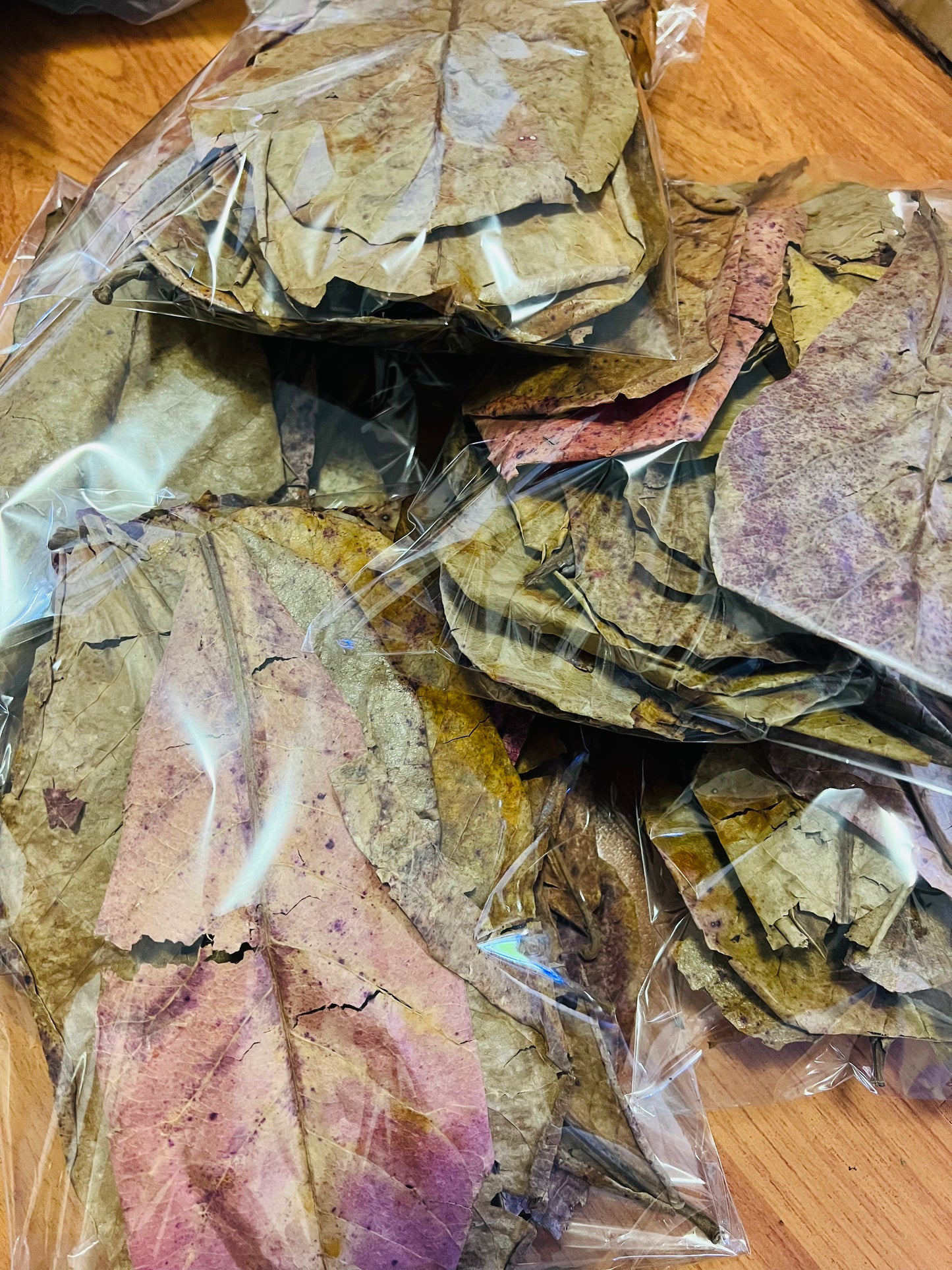
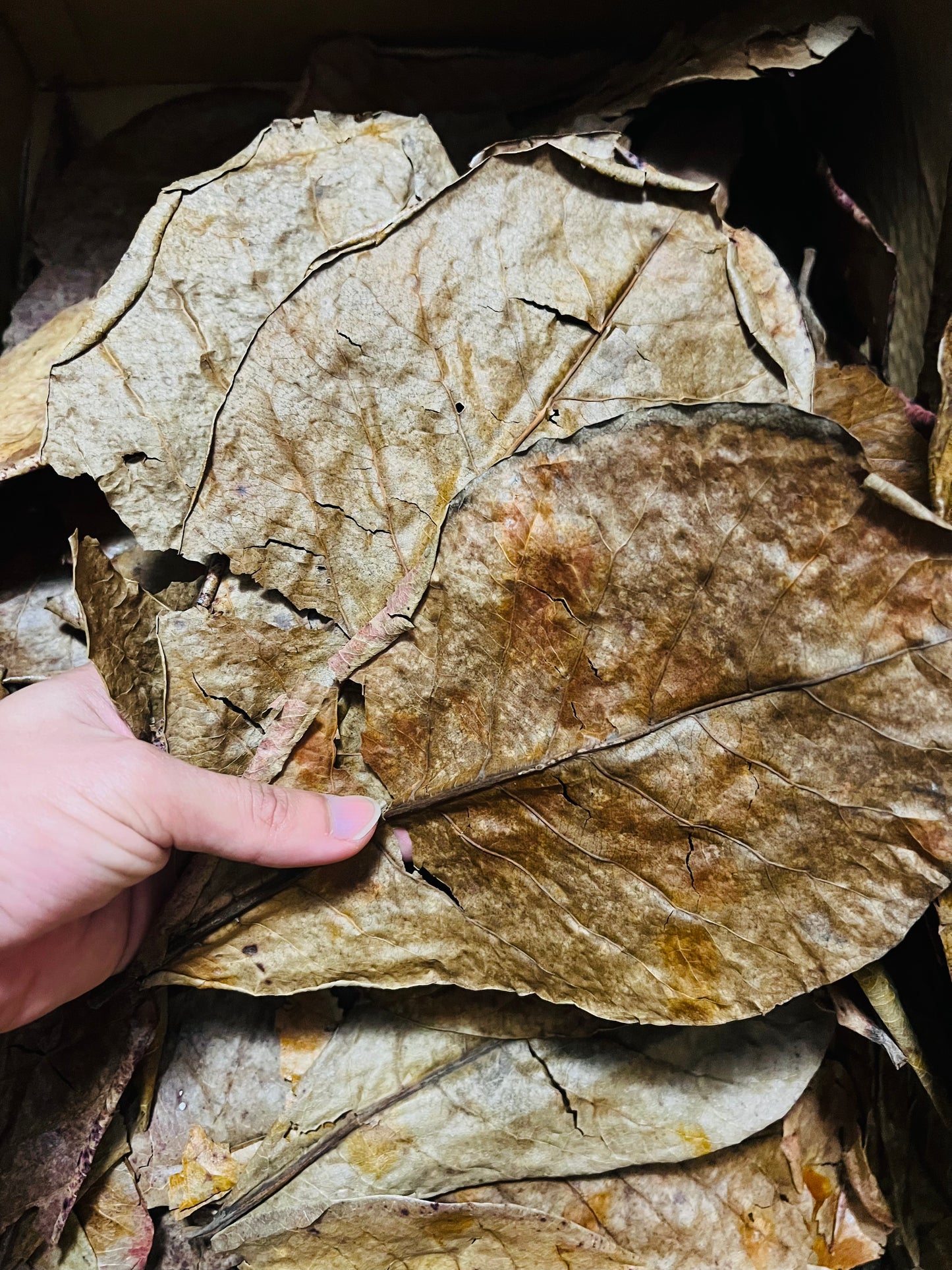
More Information
How to Take Care The Shrimps
Taking care of Freshwater aquarium Shrimps (Neocaridina and Caridina) involves providing them with a suitable environment and proper attention to their specific needs. Here are some essential care guidelines:
1. Tank Setup:
- Shrimp are relatively small and can be kept in tanks as small as 5 gallons (19 liters), but a larger tank allows for more stable water conditions.
- Provide hiding spots with plants, driftwood, and rocks. Live plants like Java Moss and Java Fern are ideal as they serve as both hiding places and a food source.
2. Water Parameters:
For Neocaridinar (Cherry Shrimps)
- Temperature: 72-78°F (22-28°C)
- pH: 6.5-7.5
- GH (General Hardness): 6-10
- KH (Carbonate Hardness): 3-10
For Caridina (Taiwan bee, Crystal Shrimps)
- Temperature: 72-78°F (22-26°C)
- pH: 6.0-6.5
- GH (General Hardness): 3-5
- KH (Carbonate Hardness): 0-10
3. Filtration:
- Use a sponge filter such as Qanvee filter or a gentle flow filter to avoid strong currents that can stress shrimp.
4. Feeding:
- Shrimp are omnivores and feed on algae, biofilm, and commercial shrimp pellets.
- Supplement their diet with blanched vegetables like Mulberry leaves, spinach or zucchini.
- Offer a varied diet to ensure proper nutrition.
5. Water Changes:
- Perform regular water changes (10-20% weekly) to maintain water quality.
- Use dechlorinated water at the same temperature and parameters as the tank.
6. Molting:
- Provide a calcium source, such as our shrimp mineral products or crushed coral, cuttlebone, to support molting.
7. Tank Mates:
- Shrimp are generally peaceful but can be preyed upon by larger fish.
- Suitable tank mates include small, non-aggressive fish like guppies or endlers.
- Avoid aggressive or predatory species.
8. Breeding:
- Shrimp breed readily in captivity.
- Provide moss or other dense plant growth for shrimp to hide their eggs.
- Maintain stable water conditions to encourage breeding.
9. Health and Observation:
- Regularly observe your Shrimp for signs of stress, illness, or abnormal behavior.
- Quarantine new arrivals to prevent introducing diseases.
10. Patience:
- Shrimp keeping can be rewarding but requires patience. Allow your aquarium to mature and stabilize before adding shrimp.
By following these care guidelines, you can create a thriving environment for your Shrimp and enjoy their vibrant colors and fascinating behavior in your aquarium.
How to Acclimate New Shrimps & Fish
Acclimating new aquarium shrimp/fish is crucial to ensure a smooth transition and minimize stress. Follow these steps for proper acclimation:
Materials Needed:
- A container or bucket.
- An airline tube or a slow-drip system (optional).
- A net.
Procedure:
- Turn Off Lights: Dim the aquarium lights or turn them off completely to reduce stress on the shrimp/fish.
- Float the Bag: Place the sealed bag containing the shrimp on the surface of the aquarium water. This allows the water inside the bag to gradually adjust to the tank temperature.
- Drip Acclimation (Optional): If you have an airline tube or a slow-drip system, set it up to provide a gentle flow of water from the tank into the bag. This method is slower but provides a more gradual transition. Adjust the flow rate to about 2-4 drops per second.
- Monitor Temperature: Ensure the water temperature inside the bag matches the tank temperature after about 15-20 minutes. This step is essential to prevent temperature shock.
- Open Bag and Add Tank Water: Carefully open the bag without allowing shrimp to escape. Using a net or your hand, gently transfer the shrimp into a clean container or bucket. Be cautious not to introduce water from the bag into the container.
- Gradual Water Exchange: Over the course of about 30 minutes to an hour, gradually add small amounts of aquarium water to the container with the shrimp/fish. This helps the shrimp adjust to the tank's water parameters.
- Net Transfer: After acclimation, use a net to transfer the shrimp from the container into the main aquarium. Avoid adding any water from the acclimation container into the tank.
- Dispose of Bag Water: Safely dispose of the water from the bag. Do not release it into your aquarium, as it may contain contaminants or pathogens.
- Observe and Monitor: Keep an eye on the newly introduced shrimp/fish for the next few hours to ensure they adapt well to their new environment. Monitor their behavior and look for any signs of stress or illness.
Proper acclimation helps reduce the risk of shock and ensures a smoother transition for your new aquarium creatures. It's an essential step in ensuring their health and well-being in your tank.
Shipping & DOA Policy
- Concerned about purchasing livestock online? Rest assured, we ship shrimps and other livestock to every corner of NSW, VIC, QLD, and SA weekly, ensuring their safe and healthy arrival. Our Dead on Arrival (DOA) policy is applied to all orders, guaranteeing your peace of mind.
- Shrimps are carefully packed in a styrofoam box and shipped every Monday/Tuesday/Wednesday early morning to avoid weekend delays. Delivery times generally range from 1 to 3 business days depending on your location.
- To initiate DOA claims, we kindly ask buyers to contact our dedicated support team either via email at aushrimphome@gmail.com or directly through our website's chat feature. In order to expedite a swift resolution, which may involve resending a new package, issuing a refund, or providing credit for a future order, we kindly request that buyers submit a clear photo of the deceased shrimp(s) inside the unopened bag within a maximum of 1 HOUR from the moment of Australia Post delivery. Your timely communication is pivotal in enabling us to promptly address any concerns and uphold our unwavering commitment to ensuring your satisfaction.
Important Notes Before Buying
- Please note that our ornamental shrimps are small, with a maximum size of around 2cm. When purchasing, you'll typically receive juveniles or sub-adults measuring approximately 0.8-1.5cm, which may display less vibrant coloration than adults. However, rest assured that they originate from the same colony and offer excellent value for your investment.
- To ensure the well-being of your shrimp/fish upon arrival, please follow the tracking number and acclimate them by slowly adding tank water to their bag/container for about one hour. This gradual transition helps them adapt to new water parameters and temperatures.
- The images featured on our website showcase the exceptional individuals and actual shrimps/fish thriving at our facility. However, please keep in mind that as living organisms, we cannot guarantee that the shrimp/fish you purchase will be identical in color and size. Keep in mind that shipping stress may temporarily affect the shrimp's coloration, especially neocaridina species, which can become pale and translucent. However, their colors will return to their vibrant state within a few days under suitable water conditions.
- Our pricing is based on current stock levels and market rates in Australia. We regularly adjust our prices to provide our customers with the most competitive rates available.
- If you encounter any issues with the color or quality of the shrimp/fish, please don't hesitate to reach out. We are committed to assisting and resolving any concerns. Thank you for your trust and support!

